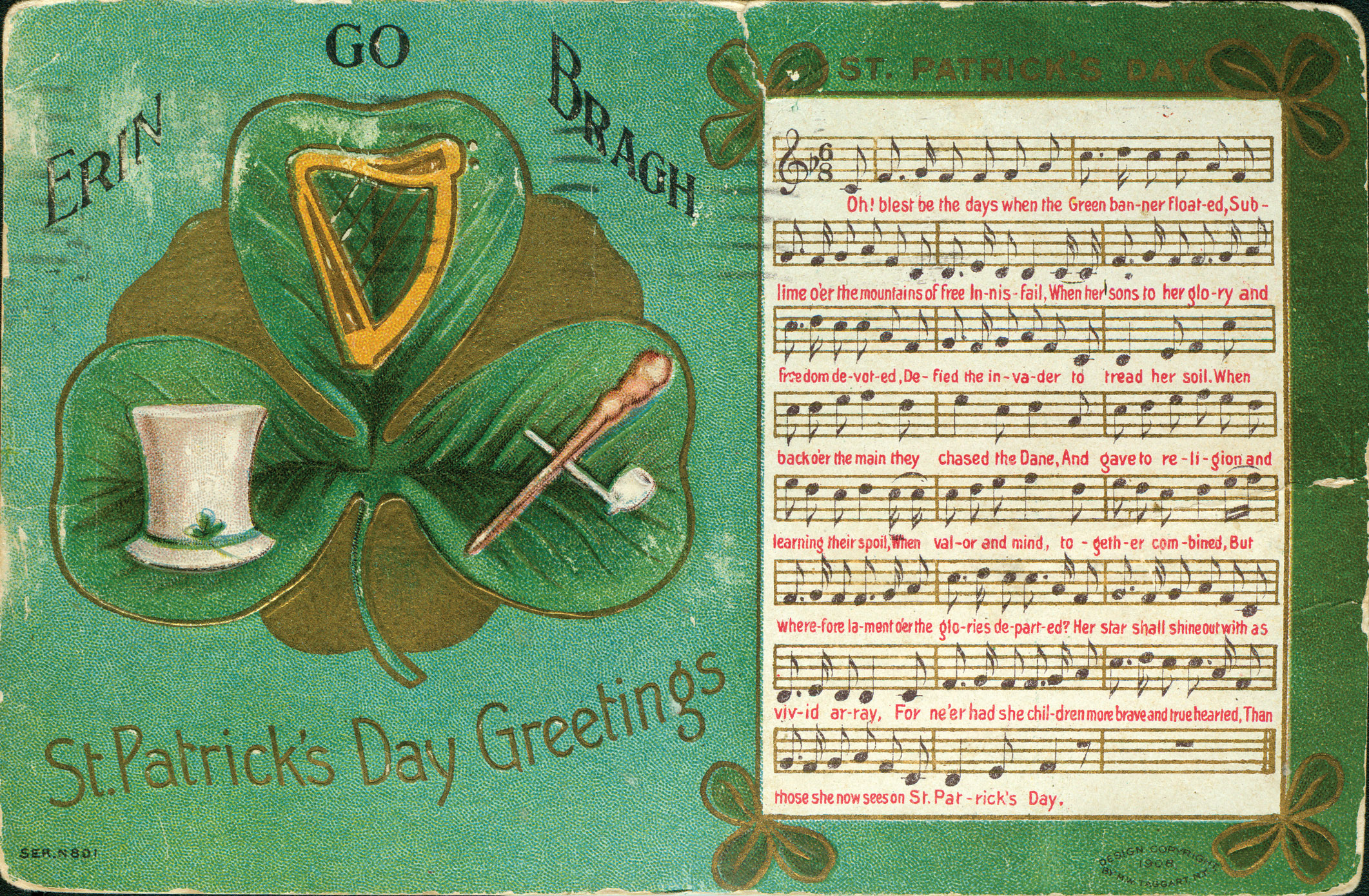By MICHAEL BUSHNELL
Northeast News
March 15, 2017
Greeting postcards such as this have long been used to convey greetings to friends and relatives afar. The man who became St. Patrick, the patron saint of Ireland, was born in Wales about 385 AD/CE.
Maewyn, as he was called, considered himself a pagan until he was sold into slavery at the age of 16 by a group of Irish marauders that plundered his village. During his six years of captivity, Maewyn became closer to God, later escaping to Gaul where he studied for 12 years in a monastery under St. Germain, bishop of Auxerre.
Maewyn discovered his calling was to convert pagans to Christianity. He wished to return to Ireland where he could focus on the pagans who had “overrun” his country.
His superiors, however, appointed St. Palladius to the Irish post, but two years later, Palladius transferred to Scotland. Maewyn, now known as Patrick, having adopted that Christian name, was then appointed as second bishop to Ireland. He was quite successful at winning converts, which of course upset the Celtic Druids.
Arrested regularly, he managed to escaped each time he was incarcerated, traveling throughout Ireland and establishing monasteries. He also set up schools and churches that aided in the conversion of the Irish populous to Christianity.
His mission in Ireland lasted more than 30 years. After that time, Patrick retired to County Down. He died on March 17 in 461 AD. That day has been commemorated as St. Patrick’s Day ever since.
A traditional icon of the day is the shamrock. This stems from a bona fide Irish tale, the one about how Patrick used the three-leafed shamrock to explain the Trinity. He used it in his sermons to represent how the Father, the Son and the Holy Spirit could all exist as separate elements of the same entity. His followers later adopted the custom of wearing a shamrock on the day of the feast of St. Patrick.
St. Patrick’s Day was first publicly celebrated in America in 1737, in Boston. This card was sent to Mae Smith, RFD No. 1, Denver, Mo., on March 15, 1909. The message on the back reads, “When you write, send to Della’s home at Route 2, Denver, Missouri. Am afraid she got my letter. How is Elmer? Pauline is well again. Wish you could come down and stay all night while Will is gone. Gets awful lonesome. Bertha.”
The verse set to music reads:
“Oh! Blest be the days when the green banner floated, Sublime o’er the mountains of free In-nis fail/ When her sons to her glory and freedom devoted/ Defied the invader who tread on her soil.
“When back oe’r the main they chased the Dane/ And gave to religion and learning their spoil/ When valor and mind together combined/But wherefore lamented the glories departed?
“Her star shall shine out with as vivid array/ For ne’er had she children more brave and true hearted/ Than those she now sees on St. Patrick’s Day.”
Sweet sound of St. Pat’s
Related Posts
Family Flower Business, a Staple of Northeast Community
Michael Bushnell Contributing Historian Rose Marie Serrone opened her flower and gift shop in a single story, Art Deco-style building in 1946 located at 2659 Independence Blvd. Rose Marie’s Floral…
Ice Wagons Once a Staple of Daily Neighborhood Life
Michael Bushnell Contributing Historian Seventeen carloads of 8-inch ice, direct from the Nemaha River near Lincoln, Nebraska were received in this city on Sunday last by the K.C. & Wyandotte…

















